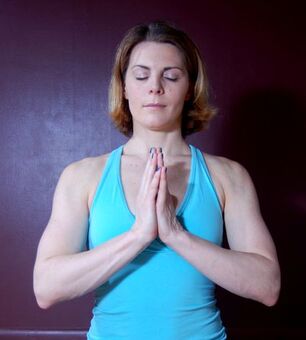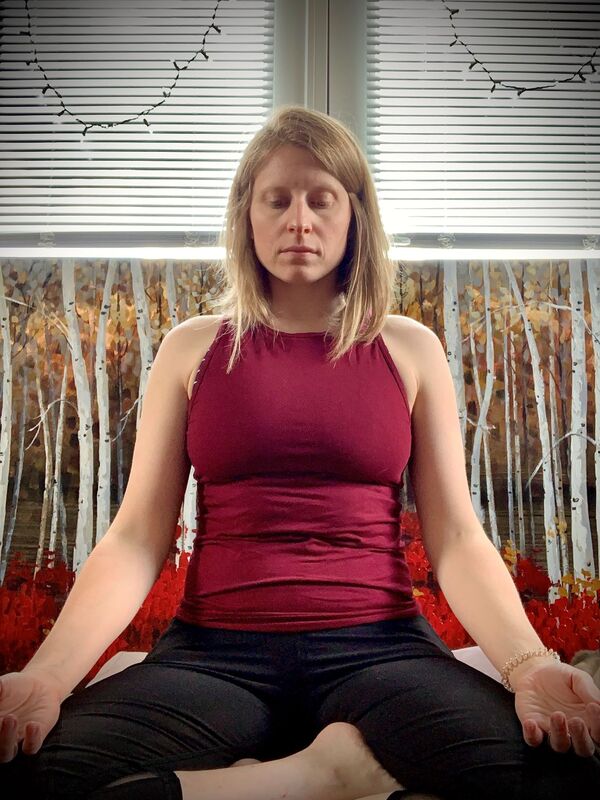|
Tapping into our heart space, practicing gratitude and compassion is a simple way that anyone can connect more deeply within themselves and carry that into their relationships with others. The gassho meditation is very simple and can be easily practiced alone or in a group. Try this delightful meditation to feel more connected and gain more clarity.
What is Gassho? Gassho is a Japanese word that literally means bring two hands together. The basic hand position (Mudra) would equally be called prayer hands in English or Anjali Mudra in Sanskrit, the primary language of yoga. No matter what you choose to call the hand position symbolically all three share the idea of being in service, showing respect, carrying goodwill for one another, or holding gratitude. The hand position is often used as a greeting or as a ritualistic gesture. Most likely you have already experienced this gesture in some form. What is Gassho Meditation? Gassho meditation is a simple form of focus that is a very popular practice in the Reiki Tradition (Energetic healing art). Gassho is considered to be one of the three pilars of Rieki as taught by Dr. Mikao Usui , the founder of the modern Reiki Practice. It is said that Usui Sensei practiced this meditation daily and taught its power of love and connection to his students. 5 Simple Steps to Gassho Meditation:
Tips and variations:
Remain lighthearted throughout the practice and tune into your joy. Namaste, Chris Loebsack, 500 ERYT Photo Below- Educator Karen Iracane in Gassho, by Chris Loebsack
0 Comments
Many of us have heard that mediation is a great way to quiet the mind and help manage stress in our lives. Unfortunately, not many people have the patience or attention span to sit quietly and reflect from within. This makes it hard for people to think about a mediation practice and how to start the process. Thankfully, there is a technique called Mantra.
Mantra is a word or something smaller, such as a sound or syllable, that has meaning to the person saying or repeating it. While saying a Mantra, it is usually used in a repetitious way, which is called Japa. Mantras could consist of the practitioner paying tribute to a god or goddess, but it does not have to be. It could also be a word, saying or phrase that helps the person concentrate on their own journey and what they might want within it. A mantra can be spoken out loud or a thought in the mind. During a mantra meditation, the practitioner would repeat the mantra multiple times. Usually, a mantra is repeated 108 times. I know you are thinking, “how many of us can count and speak at the same time?” The use of mala beads can help the counting process while you say the mantra or think it. Mala beads can be a long necklace with 108 beads around it. Each time you say your Mantra, your pointer finger and thumb would be placed on one bead. As you continue, the pointer and thumb work their way around the beads, until you are back at the start. Being someone who has a sporadic mediation practice, I decided to try a mantra meditation. To help with my counting, I used a set of mala beads. I chose a mantra that meant something to me and would help me manifest certain qualities I want to emphasize in my life. This mantra was, “Om Gam Ganapataye Namaha, which Mary Grace Garis defines in short as, “Salutations to the remover of obstacles.” For the next 2 weeks, I would be indulging myself in a mantra practice. When I started, I felt no different. It felt like I was doing one extra thing in my day. By the end of week one, I had already observed: I was more comfortable saying the mantra, I could notice my breathing patterns, and I felt less anxious. By the end of two weeks, I had developed a strong comfortable seat and was using my mantra meditation 2-3 times a day! It felt so good to continue the meditation, I just kept going! I will keep this mantra meditation moving forward, as the benefits are priceless. Have I noticed anything in relation to overcoming obstacles? I first thought, not that I am aware of. Then I realized, starting this meditation in the first place, was a large obstacle to overcome. Ashley Hackett is a certified Hot Yoga Educator and 200hr ERYT and is currently enrolled in the Boundless Yoga Studio 300 hr Yoga Educators Advanced Studies Program. She balances her love of heat building practices with her meditation, yin yoga and restorative yoga sessions. |
Boundless Yoga Staff & StudentsWe are continuously interested on how our reactions and responses to our personal journeys, albeit travel, adventure, new job, etc. mirror and reflect our social, emotional and spiritual ups and downs. We try every day to apply what we learn about ourselves on the yoga mat to our personal lives. Thank you for tuning in as we share some of those aspects with you. Archives
December 2022
Categories
All
|
- HOME
-
- Monthly Challenge
- Book Club Discussion
- 7/11-8/1 (Thurs) Meditation & Mindful Movement Series
- 7/17 Beach Day Yoga Road Trip: Ocean Groove NJ
- 8/3- 8/28 (Tues): Roll & Release Series
- Sept/Oct: Inversion Immersion
- Sept-Dec: Personal Development Course
- 9/15 Moon Planning Workshop
- Bhakti Flow and Kirtan w/ Ian Froman
- Schedule
-
- 200 Hour Teacher Training
- 300 Hour Teacher Training
- Arm Balance Academy - CE Program
- Inversion Immersion Training Program
- Personal Development- Continuing Studies
- Thai Yoga Training
- The Boundless Breath ~ Pranayama Training Weekend
- The Koshas Demystified - Yoga Philosophy Course
- Rollit & Release it: Yoga and Fascia Continued Studies
- Yin Yoga Basics Course
- Yin Yoga Advanced Course
- Aerial Yoga Teacher Training
- Professional Development Continuing Studies Module
- Boundless Vinyasa Sequencing- Unlock the Power of Combination and Flow
- Aerial Yoga Yin-Restorative Training
- Graduate Directory
- Yoga Online Anytime
- Contact Us
- Blog: Insights from our Staff and Students
- Community Resources
- Studio Rental
- Media and News
- Yoga Podcast: Chats from the Mat w/ Brian M. Davis
- HOME
-
- Monthly Challenge
- Book Club Discussion
- 7/11-8/1 (Thurs) Meditation & Mindful Movement Series
- 7/17 Beach Day Yoga Road Trip: Ocean Groove NJ
- 8/3- 8/28 (Tues): Roll & Release Series
- Sept/Oct: Inversion Immersion
- Sept-Dec: Personal Development Course
- 9/15 Moon Planning Workshop
- Bhakti Flow and Kirtan w/ Ian Froman
- Schedule
-
- 200 Hour Teacher Training
- 300 Hour Teacher Training
- Arm Balance Academy - CE Program
- Inversion Immersion Training Program
- Personal Development- Continuing Studies
- Thai Yoga Training
- The Boundless Breath ~ Pranayama Training Weekend
- The Koshas Demystified - Yoga Philosophy Course
- Rollit & Release it: Yoga and Fascia Continued Studies
- Yin Yoga Basics Course
- Yin Yoga Advanced Course
- Aerial Yoga Teacher Training
- Professional Development Continuing Studies Module
- Boundless Vinyasa Sequencing- Unlock the Power of Combination and Flow
- Aerial Yoga Yin-Restorative Training
- Graduate Directory
- Yoga Online Anytime
- Contact Us
- Blog: Insights from our Staff and Students
- Community Resources
- Studio Rental
- Media and News
- Yoga Podcast: Chats from the Mat w/ Brian M. Davis
Get more updates and fun yoga information on our Facebook page!





 RSS Feed
RSS Feed